clean energy
Going Solar: a series exploring clean energy in Philadelphia
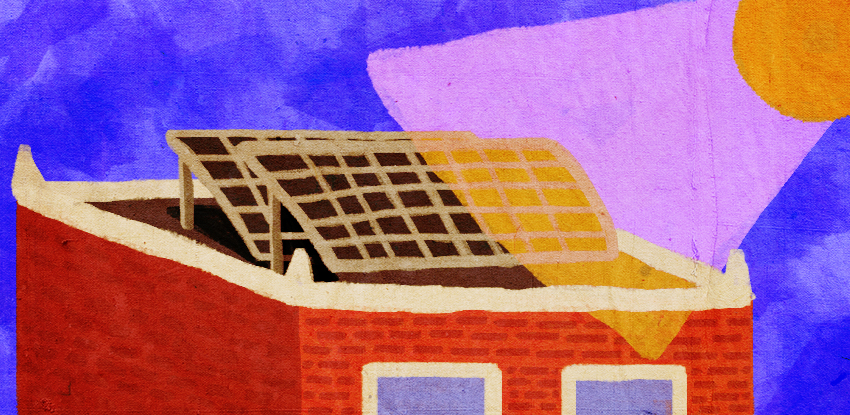
Part 1: 6 Things You May Not Know About Going Solar
Part 2: Solarize Philly
This winter, we want to bring attention to solar energy. Our ‘Going Solar’ series will explore the ins and outs of going solar and the support available to go solar in Philadelphia.
Part 1: 6 Things You May Not Know About Going Solar
We’re beginning with a few surprising solar panel facts we learned after talking to Brent Groce, the owner of a solar-powered home in the Fitler Square neighborhood of Philadelphia. We also learned a little bit about federal support for solar shoppers, and why installing a solar panel system in 2020 is great for tax credit.
1. SOLAR PANEL MAINTENANCE
Surprisingly, solar panels require little, or no, maintenance. Panels are designed as a minimum-maintenance technology and are naturally cleaned by rainfall and snow. Climbing up to the roof to clean solar panels is entirely unnecessary (not to mention unsafe)!
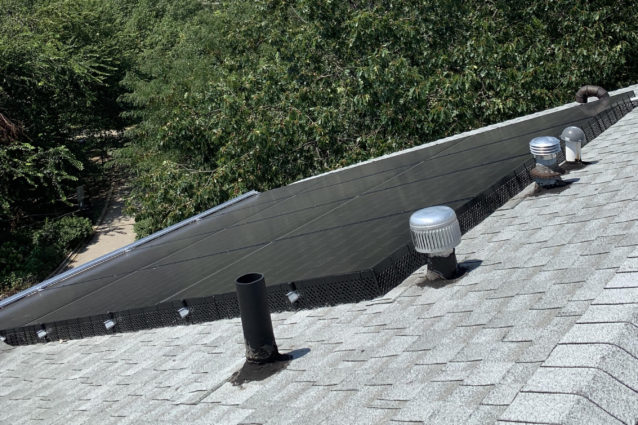
2. THERE’S A (SOLAR) APP FOR IT
Roof-crawling aside, you probably still want to keep an eye on how your solar panels are doing. Luckily, there’s an app for it. Ten years ago, owners could only receive data on the total production of their solar panels. If there was a drop in energy production, the lack of data specificity made it challenging to pinpoint the underperforming panel, or panels. Now, many, but not all, solar installations allow you to track and analyze the output of each panel daily.
3. SOLAR INVESTMENT AND WARRANTY
Solar panels are typically considered a 25-year investment, and as such, have a 25-year warranty!
4. SOLAR PROTECTS ROOFS
We know that solar panels convert sunlight to electricity, but we often forget that the presence of solar panels means that the roof isn’t capturing radiation or being battered by wind and rain. UV radiation changes the chemical makeup of a roof over time, challenging the integrity of the roof. With solar panels, damaging UV light is simultaneously being redirected away from the roof, and being utilized as energy. Win-win.
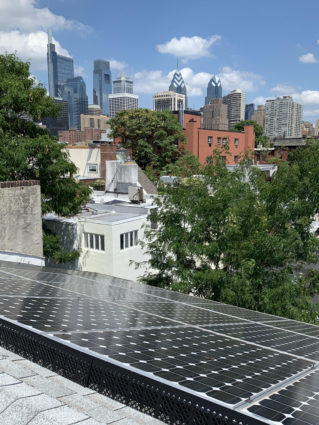
5. SOLAR COSTS BY THE KILOWATT
Solar costs are measured by cost per watt and a house is fitted for a system that is sized by number of watts. A typical Philly rowhome fits a 3-5 kilowatt (kW = 1,000 watts) system. In 2010, the price was about $6.60 per watt. Currently, the cost is under $3.00 per watt. The gross cost of installing a solar system for a typical Philly rowhome would be around $9,000 to $15,000. This price is BEFORE incentives and rebates like the federal tax credit (ITC) and the new Philadelphia Solar Panel Incentive Program, which passed in 2019!
6. SOLAR INCENTIVES AND REBATES
The federal Solar Investment Tax Credit (ITC) allows solar shoppers to claim 30% of the cost of a solar panel system as tax credit. The federal ITC will step down to 26% in 2020, 22% in 2021, and 0% for residential homeowners (10% for commercial) in 2022, so now is the best time to purchase a solar panel system.
In Philadelphia, the new Solar Panel Incentive Program passed in 2019 and offers rebates to offset the cost of installing solar panels. The new rebate has $500,000 available to help Philadelphia citizens through the end of 2024. There are also incentives to convert to solar energy through Solar Renewable Energy Credits (SRECs) that may earn a homeowner $100 to $200 back per year.
If you’ve been thinking about going solar, now is the time. Groce, who used to work for a local solar energy company, says that a consultation is usually free and takes only a half hour or so. The paperwork process takes a few weeks, but the actual installation of the racking system, the panels, and the inverter to convert electricity from DC to AC usually takes only one to three days.
Part 2: Solarize Philly
In 2017, the Philadelphia Energy Authority (PEA) launched Philadelphia’s first citywide program to help its citizens go solar. The program, called Solarize Philly, aims to make the process of going solar as streamlined and as affordable as possible.
The push to create a program like Solarize Philly came from 2016 data showing that going solar had become cost-competitive with monthly payments to energy companies like PECO. Laura Rigell, a Solar Manager at the PEA, shared that a customer could pay the same monthly amount or less as a loan payment for solar, rather than as an expense to PECO. “You can be making an investment in your property with that money rather than just paying it as an expense to PECO for the foreseeable future,” Rigell explained.
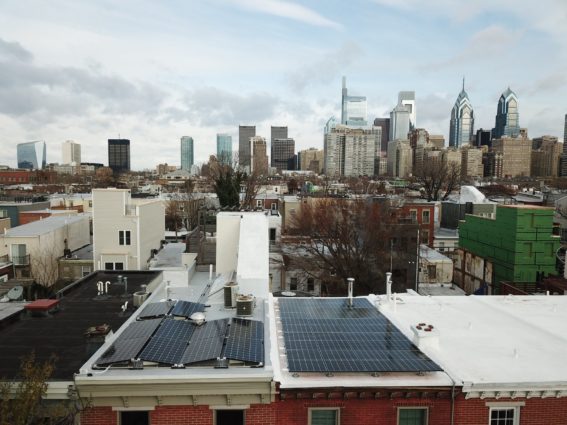
However, solar customers still rely on PECO, albeit in a different way. The company allows solar customers to use its energy grid to store energy converted from private solar panels, measured in kilowatts. Through a billing mechanism called net metering, PECO gives a kilowatt hour credit for every kilowatt hour produced from solar panels. “[A customer] can get a one for one credit for the extra electricity you produce on a sunny day…credit that you can use at night time or in the winter, when you’re not producing as much,” Rigell said.
When Solarize Philly kicked off in 2017, Philadelphia became the fourth fastest-growing solar market in the country. The program runs in phases: during each phase, Philly homeowners have about six months to sign up online for a free assessment from one of three solar installers that Solarize Philly has partnered with. Homeowners need only to provide their most recent PECO bill, which is used for sizing the installation – knowing how many panels will maximally offset the electricity usage of that particular home – during the assessment. If the property is fit for solar installment, the solar installer provides a proposal after the assessment. Proposals include savings – Solarize Philly has been successful in driving down the costs of solar installations for Philadelphia homeowners by partnering with several pre-approved solar installers and locking down discounted prices from solar equipment distributors. Homeowners are given a month to look over the proposal and sign a contract, and installations move forward from there.
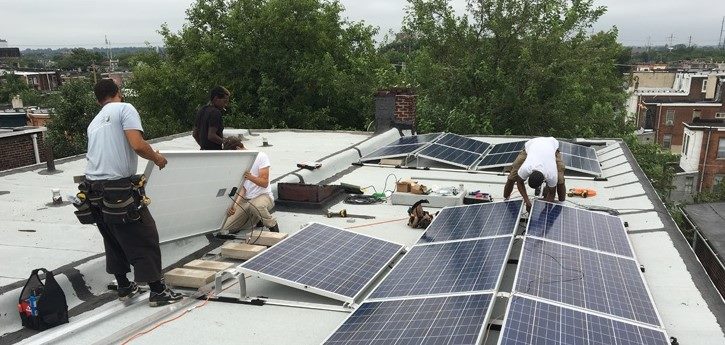
This year, Solarize Philly Phase 3 wrapped up on October 31 after a six-month period of signups. This is the first year that the program has expanded the signup to include business owners in Philadelphia. In total, 654 solar installment contracts have been signed through Solarize Philly since Phase 1 in 2017.
While a large part of the program is focused on making the process of going solar as streamlined and affordable as possible, Solarize Philly also has goals to install solar systems in 1,000 low and moderate income (LMI) households by 2026. The pilot program to install solar systems in LMI households takes a portion of the cost of each Solarize Philly solar installment and puts it into a fund to take at least 20% off each LMI household installment.
The solar installers that have partnered with Solarize Philly charge a program fee that is used to build revenue to support the LMI household pilot program. Because costs have been driven down through partnerships, participants still pay less than they would outside the Solarize Philly program despite the program fee. “We’ve designed [Solarize Philly] in such a way that we are enabling LMI households to participate,” Rigell said. “This helps us maintain equity for LMI households. We want to make sure it’s not just the wealthy households that are able to take advantage of solar…those who are struggling the most and who would actually benefit the most from savings on their electric bills are also able to move forward,” she added. To date, Solarize Philly has been able to generate about $200,000 of revenue to support LMI household installations. Solar systems will be installed in 30 LMI households in early 2020.
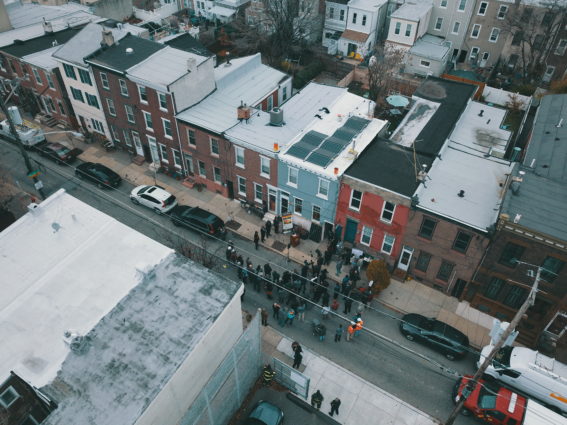
The first few months of 2020 will be busy with solar installations. Rigell does not know when the program would kick off a Phase 4, but she pointed out that Philadelphia recently passed a new solar rebate this summer. Half of a million dollars has been allocated to offset the costs of installing solar systems on a first-come, first-serve basis until the close of 2024. At twenty cents a watt for residential projects and ten cents a watt for commercial projects, homes can save about a thousand dollars. “It’s an incredible opportunity to get an additional incentive for solar,” Rigell said.
In a future post, we will cover the 10-year initiative that the Philadelphia Energy Authority (PEA) kicked off in 2016. The Philadelphia Energy Campaign (PEC) aims to create 10,000 jobs in clean energy and invest 1 million dollars in clean energy projects by 2026.
Thinking about going solar? PECO’s Solar Toolkit and U.S. Department of Energy Homeowner’s Guide to Going Solar are great places to start. The City of Philadelphia has a map to help determine the solar potential of your rooftop here. For information on energy incentives in PA click here and be sure to read about Philadelphia’s new solar rebate, which passed in 2019.







